The Problem
Whoever did the restoration on my aircraft did a reasonable job with the sheet metal, and the Ryan has a lot of complex sheet metal fairings: the wing root cuffs, the cowling, wheel pants, and the vertical stabilizer fairings.
The cowling, unfortunately, was not fitted very well when it was constructed. It had three problems:
- The cowling front opening didn't have enough "curl" where the cowling bends inwards to the center of the engine. This makes the cowling look a little funny and weakens the structure, since the bend stiffens the sheet metal.
- The front diameter is too large, larger than the engine baffles, which allowed cooling air to escape around the engine rather than go through the cylinder cooling fins. To fix this, somebody put "baffle plates" inside of the cowling and a lot of silicon sealing strips. None of this would be necessary with a properly fitted cowling.
- The bumps, which are put into the metal in order to provide clearance for the cylinder head rocker arm boxes, were not located correctly in about 4 spots. The location was off and the cowling metal was rubbing against the engine. In flight, with lots of vibration, the rubbing cut entirely through the cowling. I temporarily patched the problem by gluing on some rubber stripping and squirting in a gob of silicon sealant, but those are temporary fixes.
As a result of the poor fit, stress from the baffle plates, and vibration, the cowling I have continually cracks. At the end of the summer flying season, about 20 cracks exist on the front of cowling, each of which has be laboriously hand-welded, then polished flat again. Since the cracks always come back, the only permanent fix is to get a better-constructed and laid out cowling.
Since I had resolved to make a new cowling, I also want to make a few "improvements" such as an oil filler door in the upper left rear of the cowl. Although this door is not original, without it the only way to check the oil is to open the cowling to reach the filler door. Since radials leak a fair bit of oil, opening the cowling results in a shower of oil dripping on the pilot's head. Although I like originality, I also like the fly without having to bring a change of clothing on every outing. An oil door is a small price to pay in originality for flying convenience.
The Solution - A New Cowling
| The Artist Finding a sheet metal artist who's good at bumping aluminum is hard. Fortunately the Northwest is blessed with several such folks, and Ron Englund is very good at it. |
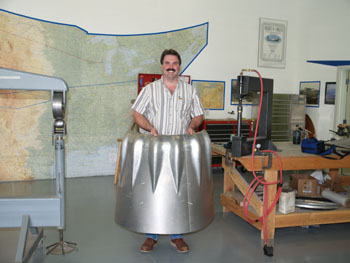 |
|
| Research and Documentation The first step is to figure out what an "original" is supposed to look like. Off to Oshkosh to measure the prototype! |
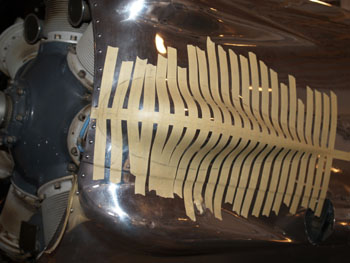 |
|
| Building the Buck and
Cowling Panels The power hammer is used to build the basic cowling shape without bumps. |
 |
|
| Adding the Bumps The bumps are then added by hand-hammering them into the cowling panels. |
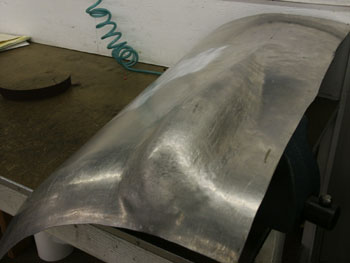 |
|
| Fitup and Planishing Initial fit of the panels into a cowling, and smoothing of the bumps. |
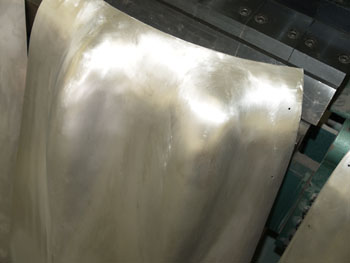 |
|
| Fitting to Airplane Serious fitting of the cowling to the airplane. |
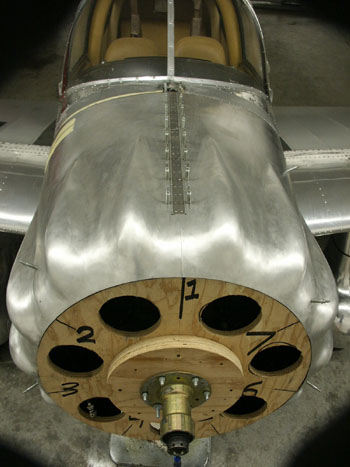 |
|
| Reinforcement Ring The front and rear of the cowling need a reinforcement ring to prevent cracks. |
 |
|
| Riveted Together and Oil
Door Nearing completion with permanent rivets, latches, and an oil door. |
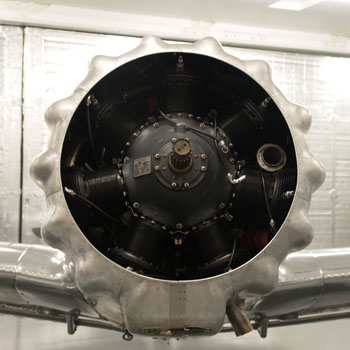 |
|
| First Flight Engine rocker box pads and first flight! |
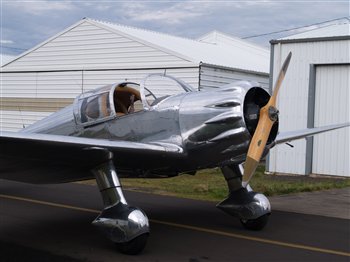 |